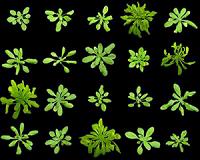| . |  |
. |
Atlanta GA (SPX) Feb 03, 2011 Biologists have discovered that primitive, predatory lampreys have structures within their gills that play the same role as the thymus, the organ where immune cells called T cells develop in mammals, birds and fish. The finding suggests that in vertebrate evolution, having two separate organs for immune cell development - the bone marrow for B cells and the thymus for T cells - may have preceded the appearance of the particular features that mark those cells, such as antibodies and T cell receptors. The first author of the paper is postdoctoral fellow Baubak Bajoghli at the Max Planck Institute of Immunobiology and Epigenetics in Freiburg, Germany. The co-senior authors are Thomas Boehm, MD, group leader at the Max Planck Institute, and Max Cooper, MD, professor of pathology and laboratory medicine at Emory University School of Medicine and the Emory Vaccine Center, and a Georgia Research Alliance Eminent Scholar. "Our research has allowed us to see that lampreys have cells that resemble our T cells and B cells, but until recently, we didn't know where they developed or much about how," says Cooper, who made pioneering studies of the "two-arm" nature of the immune system, including defining the role of the thymus, at the University of Minnesota in the 1960s. "We can now assume that the lamprey has a dual immune defense system similar to that of humans," says Boehm. For commercial and recreational fishermen, lampreys represent a threat. For biologists, lampreys represent an opportunity to envision the evolutionary past, because of their status as "living fossils" that haven't changed in millions of years. Lampreys are thought to be an early offshoot on the evolutionary tree, before sharks and fish. Their lack of jaws distinguishes them from sharks or other types of fish. Despite their primitive nature, lampreys do have a surprisingly sophisticated immune system. Blood cells develop in lampreys' typhlosole, an organ that lies next to the intestine. Lampreys have proteins in their blood that grab on to invaders like our antibodies, but structurally, those proteins don't look like antibodies. Mammals, birds and fish have two types of immune cells, which each develop in separate places. B cells, which produce antibodies, develop in the bone marrow and fetal liver, while T cells, which recognize their targets by cell-to-cell contact, develop in the thymus. In humans, the thymus is located in the upper chest, under the throat. The vertebrate thymus is a place where developing T cells must "sink or swim," because immature T cells must rearrange certain genes as part of their development. Most of the cells die because the rearrangement process is imprecise, and cells with improperly rearranged genes are screened out. The Emory/Max Planck team discovered that this same type of screening of non-functional genes appears to be occurring in the lamprey "thymoids" located in the tips of the gill filament. "We don't know much about how this process is happening, but we were able to show that functional copies are found in the blood, while non-functional copies are only found in the thymoid," Cooper says. In addition, in cells lining both the vertebrate thymus and lamprey thymoid, a gene is turned on (FOXN1) that is essential for thymus development in mice and humans, the scientists found. Mice that have this gene mutated lack a thymus and are called "nude" mice because they have no hair. "Taken together, the results suggest that this basic feature of the immune system, where two types of cells develop in separate places, may have evolved before jawed and jawless vertebrates split onto different paths," Cooper says. "Having two companion arms of the immune system may be important so that the two arms can regulate each other and prevent autoimmunity."
Share This Article With Planet Earth
Related Links Emory University Darwin Today At TerraDaily.com
 Plants Can Adapt Genetically To Survive Harsh Environments
Plants Can Adapt Genetically To Survive Harsh EnvironmentsWest Lafayette IN (SPX) Feb 02, 2011 A Purdue University scientist has found genetic evidence of how some plants adapt to live in unfavorable conditions, a finding he believes could one day be used to help food crops survive in new or changing environments. David Salt, a professor of horticulture, noticed several years ago that a variant of the research plant Arabidopsis thaliana that could tolerate higher levels of sodium ha ... read more |
|
| The content herein, unless otherwise known to be public domain, are Copyright 1995-2010 - SpaceDaily. AFP and UPI Wire Stories are copyright Agence France-Presse and United Press International. ESA Portal Reports are copyright European Space Agency. All NASA sourced material is public domain. Additional copyrights may apply in whole or part to other bona fide parties. Advertising does not imply endorsement,agreement or approval of any opinions, statements or information provided by SpaceDaily on any Web page published or hosted by SpaceDaily. Privacy Statement |